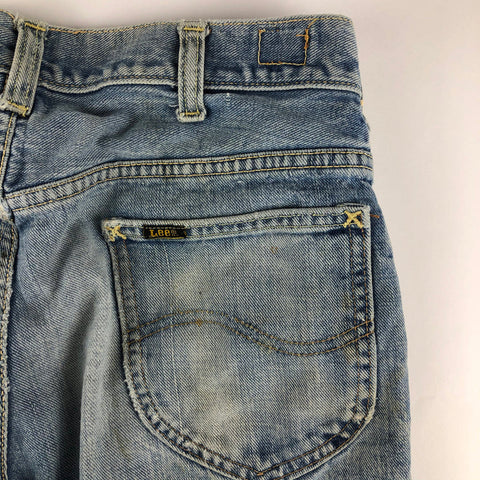We’ve seen the demand for Lee denim and products rise steadily over the last 5 years, with prices of certain coveted items regularly exceeding $200. It is important to note that the brand has developed quite a following amongst vintage collectors, some of whom are looking for true vintage denim pieces at entry level prices in comparison to the prices that some Levi’s items from similar eras fetch. We are quite interested in the history of Lee as it is often lesser known how successful they were throughout the 20th century.

In 1889, The H.D. Lee Mercantile Company was founded in Kansas by Henry David Lee and four other business partners. Throughout the remainder of the 19th century, and into the 20th century, Lee provided a vast selection of goods (from groceries to clothing) to the growing population. The company recognized the very high demand for overalls in the early 20th century and opened its first garment factory in 1912. The company shifted its focus away from grocery and dry goods distribution to meet the demand for their garments.


In the coming years, Lee’s name continued to grow in the production of overalls and jackets. The company also coined the term “Union-Alls” to describe a coverall suit that was born from an idea given to them by a mechanic who visited their factory. The need for coverall suits was growing exponentially as early motorists often doubled as mechanics. The company grew its production in the years following opening factories throughout the midwest and in Trenton, New Jersey. Most importantly, the company took over a 9 storey building that would act as its new headquarters in Kansas City, Missouri.



Throughout the 1920s, the company grew and built a unique relationship with cowboys and rodeo champions alike. Lee 101 Cowboy Pants were made from a resilient denim material.Copper rivets made famous by Levi Strauss & Co. were replaced with reinforced stitching to prevent scratching of the rider's saddle. This everlasting relationship built between Lee and their customers led to the jeans eventually being renamed Lee Riders. As this relationship strengthened the company they looked to further innovate working with Canton Mills in Ohio to create the strongest denim on the market at the time. Lee renamed this new 11.5oz denim “Jelt Denim”. Armed with this material and effective marketing Lee became the largest workwear manufacturer in the United States with sales totaling $6.4 million dollars in 1937. This number adjusted for inflation would have been around $120 million today.


In the 1940s, Lee greatly supported the war effort using its manufacturing power to make shirts, pants, and flight suits for troops fighting overseas. Lee was often unable to meet the full demand for workwear domestically throughout this period, during this time Lee shifted its marketing to focus on posterity. Post-war Lee officially created the Riders and Lady Lee Riders lines. Most notably creating their Lazy S design which began to be featured on the back pockets of jeans to rival the Levi’s arcuate. Into the early part of the 1950s, Lee created a hold within pop culture with stars Marilyn Monroe and James Dean sporting Lee Riders jeans and jackets. The youth in America were strongly drawn to Lee’s bad-boy and western imagery.


Into the 60s and 70s, the company continued to strengthen its relationship with its youthful customer base. During this time, the company listened to its customers demands creating bell bottoms, painters jackets, and unisex apparel featuring bold colour patterns. Lee’s adaptability within the market continued throughout the 80s and 90s as the brand continued to grow its selection of styles to offer stretch fabrics that allowed the company to serve customers with fuller figures. Presently, Lee has followed Levi’s example by creating a vintage line which features the reintroduction of styles that made the company a household name throughout the 20th century, changing American fashion forever.






Sources:
https://www.lee.com/about/history.html
Image sources -
Tag/Detail shots of items from our shop or or archive of items we have sold
Advertisement images from Pinterest and other photo sharing sites
